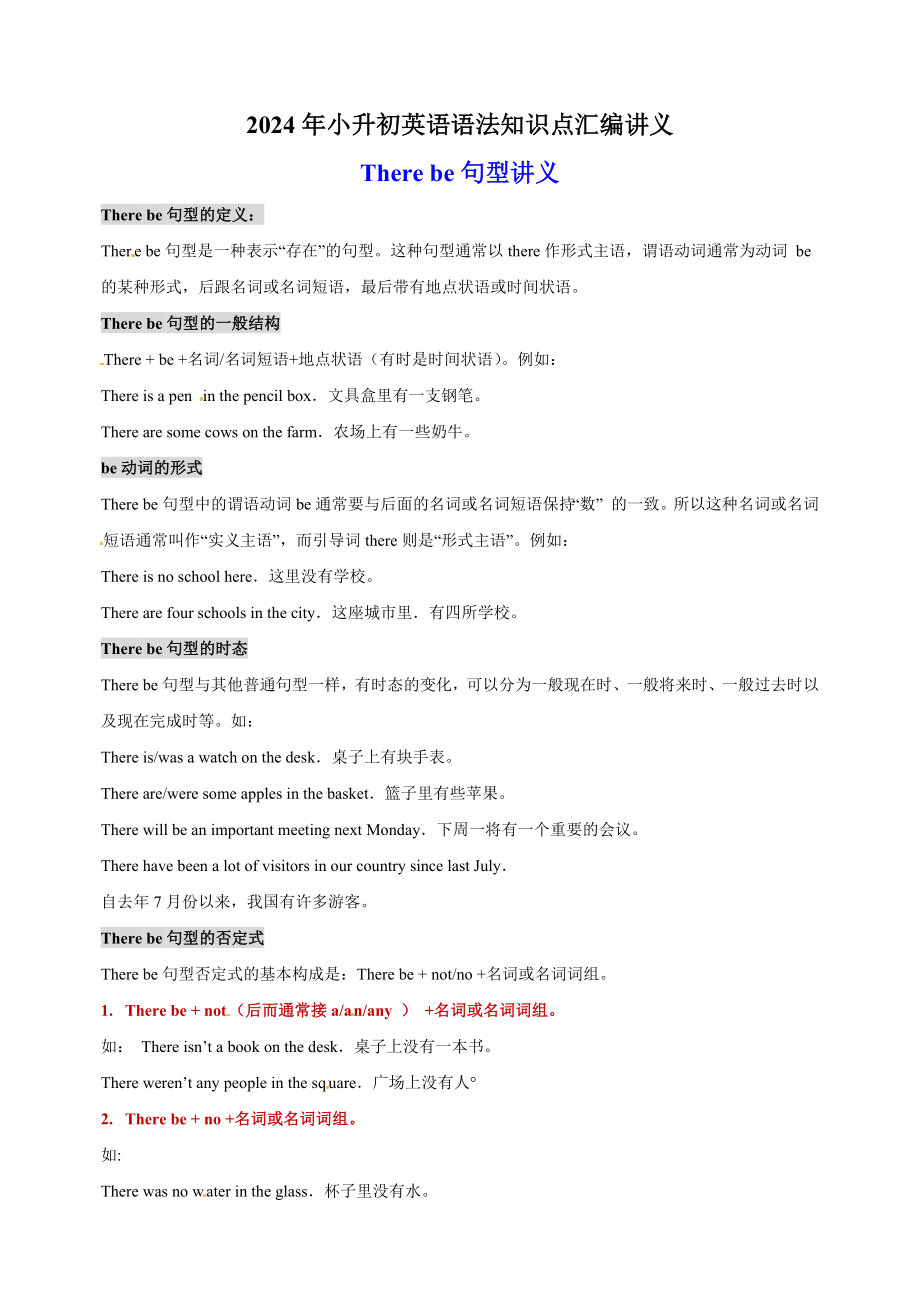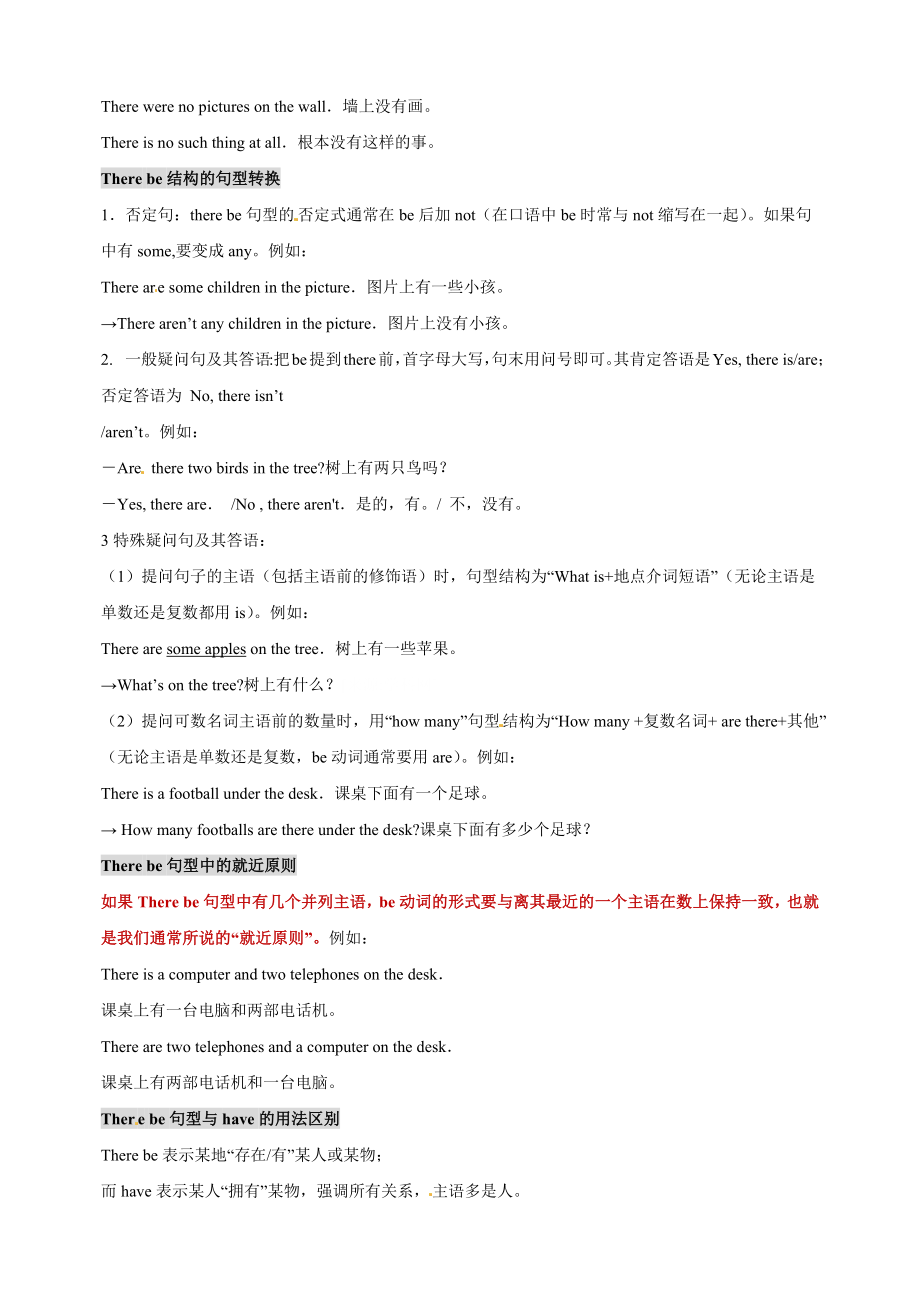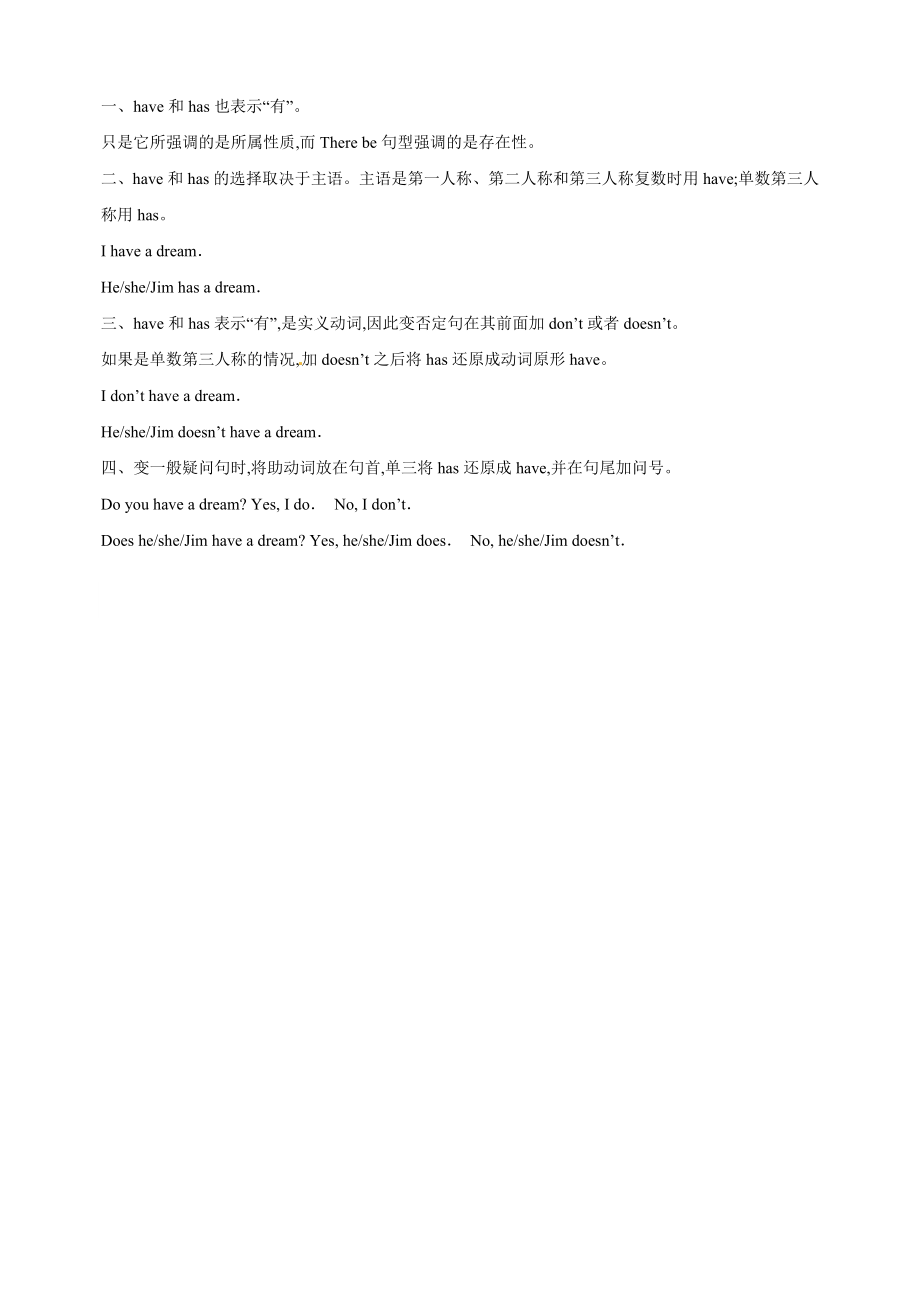 2024年小升初英语语法知识点汇编之There be句型讲义全国通用)
2024年小升初英语语法知识点汇编之There be句型讲义全国通用)
《2024年小升初英语语法知识点汇编之There be句型讲义全国通用)》由会员分享,可在线阅读,更多相关《2024年小升初英语语法知识点汇编之There be句型讲义全国通用)(3页珍藏版)》请在七七文库上搜索。
1、2024年小升初英语语法知识点汇编讲义There be句型讲义There be句型的定义:There be句型是一种表示“存在”的句型。这种句型通常以there作形式主语,谓语动词通常为动词 be的某种形式,后跟名词或名词短语,最后带有地点状语或时间状语。There be句型的一般结构There + be +名词/名词短语+地点状语(有时是时间状语)。例如:There is a pen in the pencil box文具盒里有一支钢笔。There are some cows on the farm农场上有一些奶牛。be动词的形式There be句型中的谓语动词be通常要与后面的名词或名词短
2、语保持“数” 的一致。所以这种名词或名词短语通常叫作“实义主语”,而引导词there则是“形式主语”。例如:来mThere is no school here这里没有学校。There are four schools in the city这座城市里有四所学校。There be句型的时态There be句型与其他普通句型一样,有时态的变化,可以分为一般现在时、一般将来时、一般过去时以及现在完成时等。如:There is/was a watch on the desk桌子上有块手表。There are/were some apples in the basket篮子里有些苹果。There wil
3、l be an important meeting next Monday下周一将有一个重要的会议。There have been a lot of visitors in our country since last July自去年7月份以来,我国有许多游客。There be句型的否定式There be句型否定式的基本构成是:There be + not/no +名词或名词词组。1. There be + not(后而通常接a/an/any ) +名词或名词词组。如: There isnt a book on the desk桌子上没有一本书。There werent any people
4、in the square广场上没有人2. There be + no +名词或名词词组。如:There was no water in the glass杯子里没有水。There were no pictures on the wall墙上没有画。There is no such thing at all根本没有这样的事。There be结构的句型转换1否定句:there be句型的否定式通常在be后加not(在口语中be时常与not缩写在一起)。如果句中有some,要变成any。例如:There are some children in the picture图片上有一些小孩。There



- 配套讲稿:
如PPT文件的首页显示word图标,表示该PPT已包含配套word讲稿。双击word图标可打开word文档。
- 特殊限制:
部分文档作品中含有的国旗、国徽等图片,仅作为作品整体效果示例展示,禁止商用。设计者仅对作品中独创性部分享有著作权。
- 关 键 词:
- 2024年小升初英语语法知识点汇编之There be句型讲义全国通用 2024 年小升初 英语语法 知识点 汇编 There be 句型 讲义 全国 通用
 七七文库所有资源均是用户自行上传分享,仅供网友学习交流,未经上传用户书面授权,请勿作他用。
七七文库所有资源均是用户自行上传分享,仅供网友学习交流,未经上传用户书面授权,请勿作他用。



 浙公网安备33030202001339号
浙公网安备33030202001339号
链接地址:https://www.77wenku.com/p-255864.html